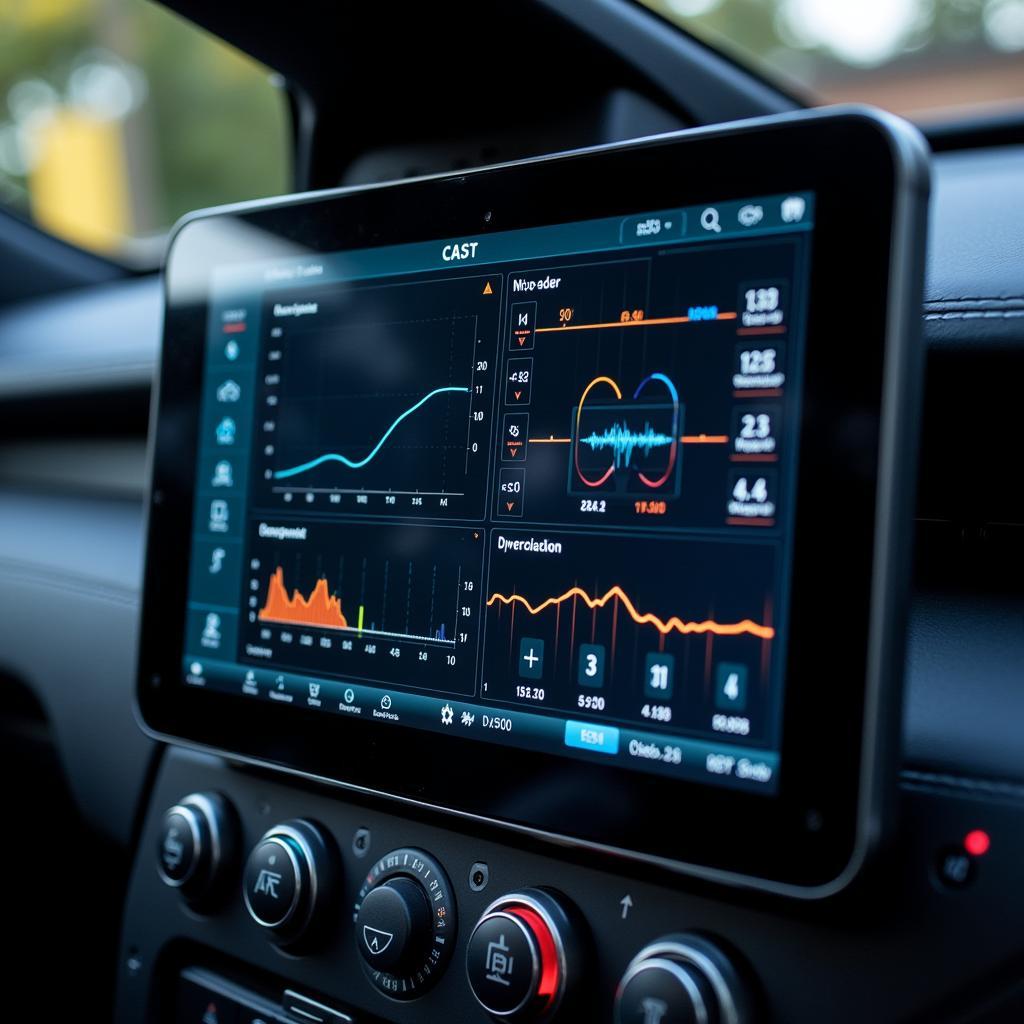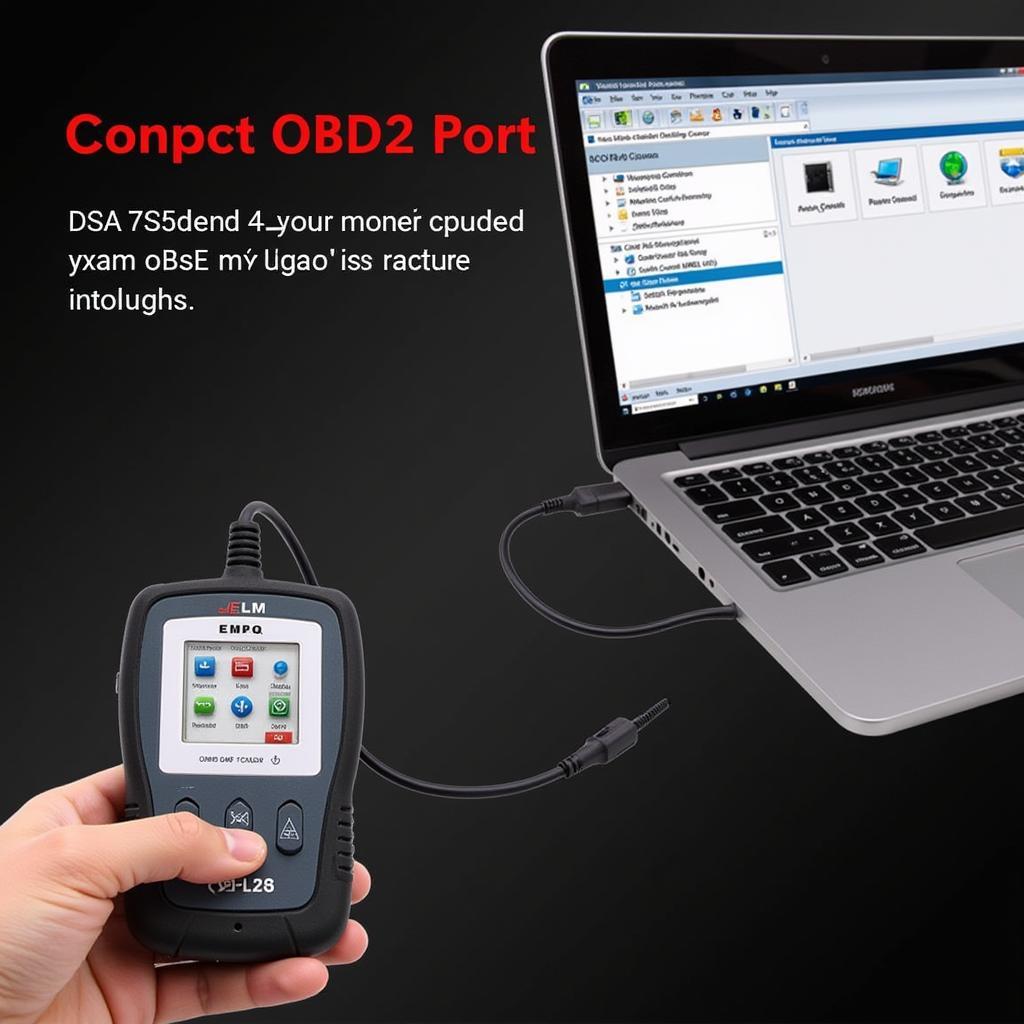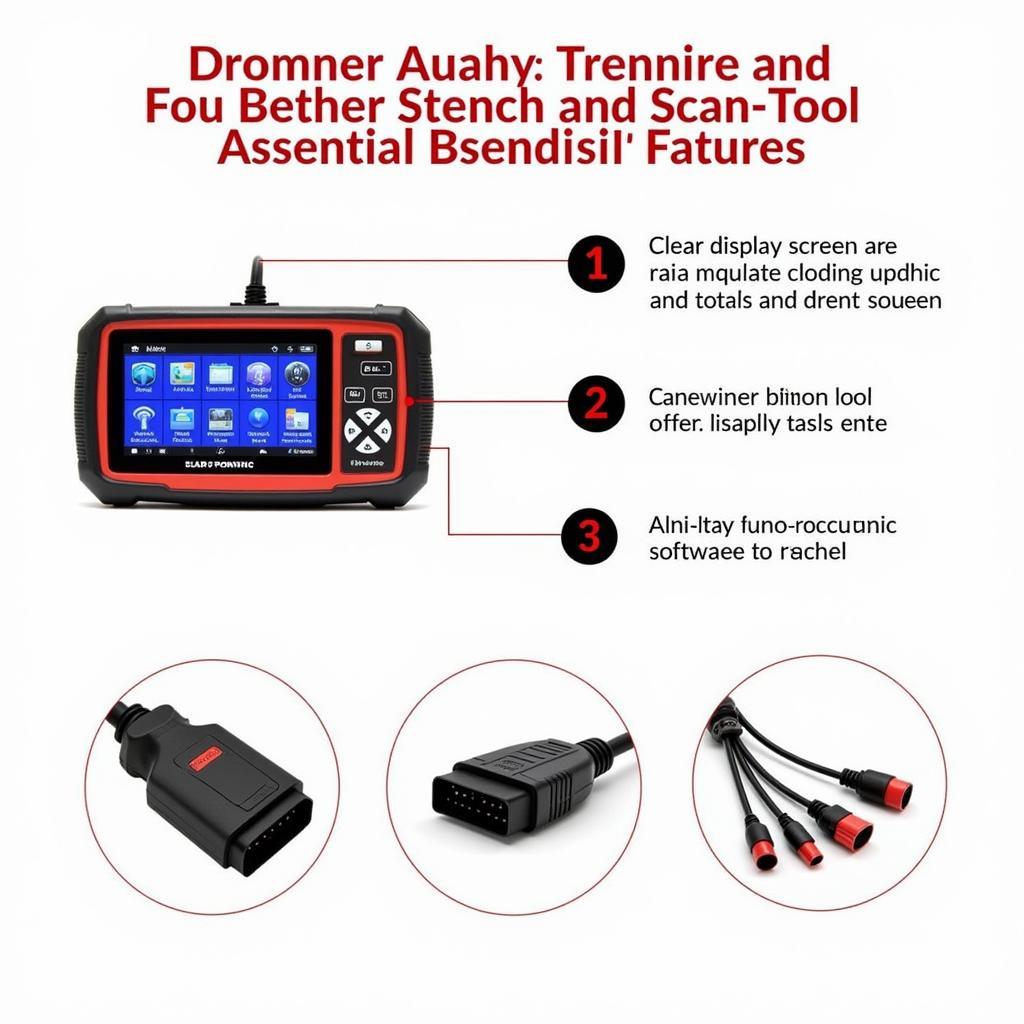Understanding Car Scanner Fault Codes is crucial for both car owners and professional mechanics. These codes, accessed through an OBD2 port, provide valuable insights into the health of your vehicle, allowing for quicker diagnosis and more effective repairs. They can save you time and money by pinpointing the source of a problem, avoiding unnecessary guesswork and part replacements. Let’s delve into the world of car scanner fault codes and empower you to take control of your vehicle’s maintenance. This guide covers everything from understanding basic code structure to using advanced scan tools for in-depth diagnostics.
Getting familiar with transmission scanner for cars can significantly enhance your diagnostic capabilities. While a generic OBD2 scanner can read basic codes, specialized scanners provide deeper insights, especially for transmission issues.
What are Car Scanner Fault Codes?
Car scanner fault codes, also known as Diagnostic Trouble Codes (DTCs), are alphanumeric codes that represent specific malfunctions detected by your vehicle’s onboard computer system. These codes are standardized across most modern vehicles, making them a universal language for diagnosing car problems. When a sensor or system in your car detects an issue, it triggers a fault code, which is stored in the car’s computer memory. A car scanner, also known as an OBD2 scanner, can then be used to retrieve these codes, providing valuable clues to the underlying problem.
Understanding Car Scanner Fault Code Structure
Most OBD2 codes follow a standardized five-character alphanumeric structure. The first character, a letter, indicates the system where the fault is detected (e.g., P for Powertrain, B for Body, C for Chassis, U for Network). The second character is a number, either 0 for generic codes or 1 for manufacturer-specific codes. The third character is a number or letter representing the specific subsystem (e.g., 1 for Fuel and Air, 2 for Fuel and Air metering (injector circuit), etc.). The final two characters are numbers indicating the specific fault within that subsystem. For example, P0301 signifies a misfire in cylinder 1.
Knowing how to interpret these codes is the first step towards accurate diagnostics. Investing in a good obdii scan and command tool allows you not only to read these codes but also to execute commands for testing different systems and components.
How to Use a Car Scanner to Read Fault Codes
Using a car scanner to retrieve fault codes is a straightforward process. First, locate your vehicle’s OBD2 port, usually located under the dashboard on the driver’s side. Plug the car scanner into the port and turn on the vehicle’s ignition, without starting the engine. The scanner will then communicate with the car’s computer and display any stored fault codes. Some advanced scanners can also display live data from various sensors, allowing you to monitor the performance of different systems in real-time.
Common Car Scanner Fault Codes and Their Meanings
While the specific meaning of a code can vary between manufacturers, some codes are common across most vehicles. P0420 often indicates a catalytic converter problem. P0171 suggests a lean air/fuel mixture. P0300 refers to random/multiple cylinder misfires. Understanding these common codes can give you a head start in diagnosing your car’s problems.
Using a reliable scan tool obd2 dongle combined with a smartphone app can provide a cost-effective solution for reading and interpreting fault codes, especially for car owners.
Advanced Diagnostics with Car Scanners
Beyond simply reading codes, advanced car scanners offer more sophisticated diagnostic capabilities. These scanners can access manufacturer-specific codes, providing more detailed information about the problem. They can also perform tests on various systems, such as activating actuators or monitoring sensor readings in real time. Some high-end scanners can even perform bi-directional communication with the car’s computer, allowing you to reprogram certain modules or perform advanced functions. If you’re serious about car repair, a whats a good scanner to reprogram car computer can be a valuable investment.
 Advanced Car Scanner Displaying Live Data
Advanced Car Scanner Displaying Live Data
Choosing the Right Car Scanner
Choosing the right car scanner depends on your needs and budget. Basic code readers are affordable and suitable for retrieving and clearing codes. Mid-range scanners offer more features, such as live data streaming and some advanced diagnostic functions. Professional-grade scanners provide comprehensive diagnostic capabilities, including bi-directional communication and access to manufacturer-specific codes. Consider the carly scanner review when making your decision.
Conclusion
Mastering car scanner fault codes empowers car owners and mechanics alike to efficiently diagnose and address vehicle issues. Understanding code structure, utilizing different types of scanners, and knowing common fault codes can significantly enhance your diagnostic capabilities, saving you time and money. Remember that while a car scanner is a powerful tool, it’s most effective when combined with a solid understanding of automotive systems. Feel free to connect with ScanToolUS at +1 (641) 206-8880 or visit our office at 1615 S Laramie Ave, Cicero, IL 60804, USA for any assistance.


